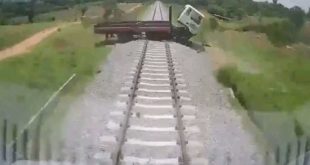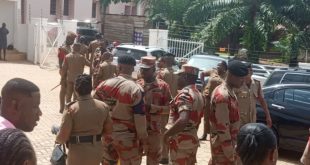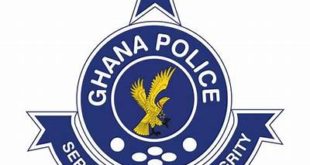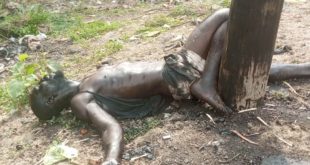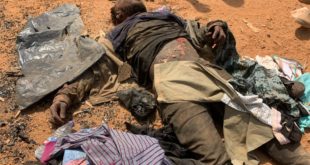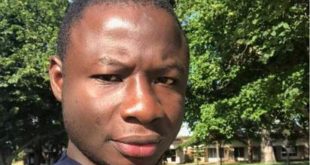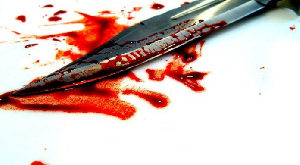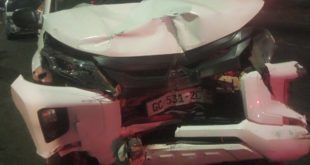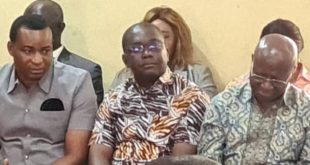by;brightwebtv/nana asare barimah
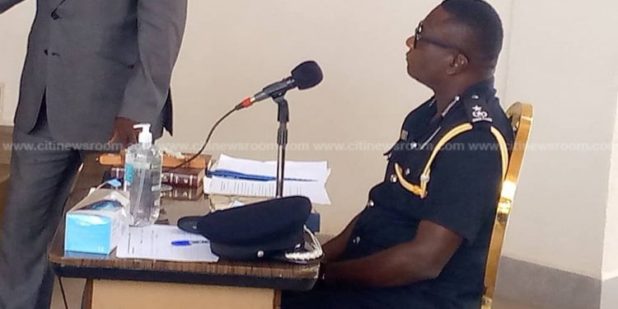
The Deputy Ashanti Regional Police Commander, DCOP David Agyemang Adjem, has admitted to failings on the part of the police in the handling of the tensions in Ejura on June 29, 2021, leading to two deaths and injuries to four persons.
Although the security personnel have claimed that they received intel about possible disturbances a day before the protest in the community, he said there were lapses in their operations on the day.
“I think the coordination was good, albeit the execution wasn’t perfect,” DCOP Adjem said to the three-member ministerial committee tasked to investigate the disturbances at Ejura.
In his testimony, he also suggested that there was no proper plan for the deployment of the military to the area.
He said the police assumed that the protestors, who police have described as rioters, would disperse upon the arrival of the soldiers.
“In the past, we’ve had incidents, anytime they had seen the military, normally they would calm down and some level of peace would have been restored, but this time I think we miscalculated, and we take responsibility for that,” DCOP Adjem said.
DCOP Adjem also said police did not expect the situation to escalate following the involvement of the soldiers but added that it was “in tune with our SOP [standard operating procedure].”
“We didn’t anticipate that it would degenerate into shooting. Our objective was first to protect lives and property and to maintain law and order.”
Addressing DCOP Adjem, the Chairman of the committee, Justice George Kingsley Koomson, stressed that police should have resorted to regular crowd control measures.
“I am of the view that you should have considered the best way to control the crowd. You have tear gas, your police riot shields, and all that,” Justice Koomson said.
DCOP Adjem had noted that the police didn’t have crowd control utilities like tear-gas and riot shields.
“We had to use gradual differential force, and this time, the gradual differential force that was used was based on the availability of equipment on site.”
“But we had used what was available. For example, we used the water cannon… they had given verbal warnings to the persons on the ground. They had used warning shots,” he added.
Ultimately, DCOP Adjem maintained that “for what we had on the ground, we did the best under the circumstances.”
The involvement of the military escalated the situation as some soldiers fired their guns to ward off the protestors who massed up after the burial of a social activist, Ibrahim Muhammed, who died a day earlier after he was attacked near his home.
Six persons later sustained gunshot wounds, two of whom subsequently died. One of the injured, a sixteen-year-old boy, has had one of his legs amputated.
Politicians ‘hijacked’ Kaaka’s death for their parochial interest – Deputy Police Commander
The Deputy Ashanti Regional Police Commander also believes there are political undertones in the Ejura disturbances that ensued last week. According to him, the death of Ibrahim Muhammed also known as Kaaka, was a catalyst for the disturbances.
“I think that there were more things in the background than what we see. I am saying this because for example, when Kaaka was killed, there were a number of political people who jumped in and hijacked the incident for their own parochial interest. So it tells you that there was a political undertone in this whole instant.”
‘We shot to maim after some protestors fired shots’ – Central Command Army head
The Ghana Armed Forces (GAF), has said the soldiers were compelled to fire into the protestors during the Ejura disturbances after gunshots were fired from among the protestors.
According to the General Officer Commanding of the Central Command, Brigadier General Joseph Aphour, who made the claim when he appeared before the ministerial committee probing the incident, the soldiers initially gave verbal warnings to the demonstrators, when they arrived at the scene, but the protestors did not pay heed.
Background
The violence occurred during protests that followed the death of Ibrahim Muhammed.
Ibrahim Muhammed, alias Kaaka, died after he was attacked by a mob on June 27 while returning home.
He’s believed to have been killed because he was critical of the government.
The 45-year-old was noted to be vocal on both local and national issues using his Facebook page.
Police in the Ashanti Region have since arrested three persons in connection with his death and put them before the court.
Ibrahim Muhammed was buried on Tuesday, June 29, 2021, alongside the two others who died in the protest.
 The Spot Of Latest Trending News And Leaks Log On For Latest Political News, Health Related Issues And More
The Spot Of Latest Trending News And Leaks Log On For Latest Political News, Health Related Issues And More
